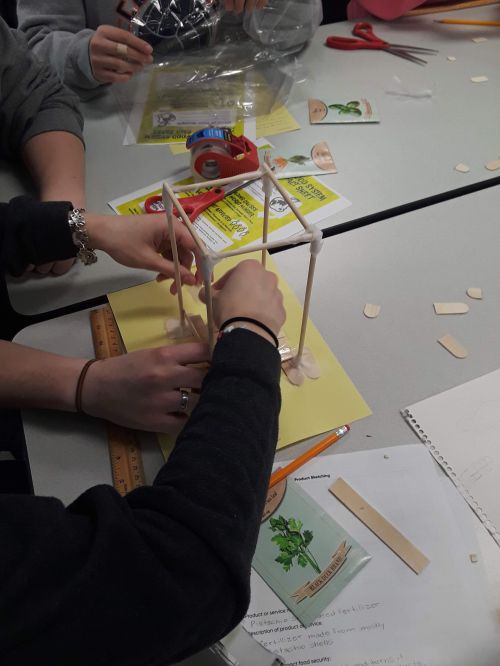Food for Thought 4-H curriculum introduces food security
Hands-on, experiential lessons build awareness and provide career exploration to help foster the next generation of contributors to community change.

The 2022 report, “Condition of Career Readiness in the United States,” provided by the Coalition for Career Development Center and the Boston University Center for Future Readiness, stated “we need to ensure that all young people have opportunities for career exploration and work-based learning all along their educational pathways.” Released in 2024, the national 4-H STEM (science, technology, engineering and mathematics) Challenge Kit is making a difference for youth in Michigan.
Purchased with a grant from the Michigan 4-H Foundation, Michigan State University Extension uses Food for Thought’s three hands-on lessons to teach young people about food security and community engagement. The activities allow youth to develop observational and problem-solving skills while exploring careers, making discoveries and developing confidence in STEM subjects. It also serves as a wonderful introduction for those individuals who participate in the World Food Prize Michigan Youth Institute pre-college program.
Food for Thought is comprised of three lessons intended for use with youth of age 8-14. It is additionally effective with high school students and adults. Everyone learns something. Career posters accompany each lesson with many opportunities to talk about jobs and careers along the way. The lessons include:
- Food Fighters – Based on a board game, the goal is for the community to win instead of individual players while building a food bank. Youth practice communication, collaboration and strategy. They become familiar with words and realistic scenarios associated with food security.
- Chew on This – In addition to defining different levels of food security, this lesson turns participants into creative and innovative entrepreneurs as they work through addressing food production challenges to decrease food waste. Teamwork can be practiced by participants working in small groups. The lesson ends with sharing business pitches and target market ideas.
- Know to Grow – This lesson has two parts to it. There is a portion that reviews parts of a plant and talks about fruit and vegetable production. Participants also have the opportunity to plant seeds to grow. The second part helps participants practice engineering design as they work together to build greenhouse structures for a variety of environmental conditions.
No prior STEM experience is required to implement Food for Thought. With an easy-to-follow facilitator guide, teachers, volunteers, parents and peers can implement the Food for Thought curriculum to build awareness and innovative ideas that may make a positive impact on food security. Lessons can be taught consecutively or may be used independently of one another. Lessons also include opening and reflective questions. In a fun, experiential manner, mixed with career exploration, it may help create the next generation of change agents. Check out how engaged Calhoun Area FFA students were with Food for Thought at the Calhoun Area Career Center, where all three lessons were used.
MSU Extension and Michigan 4-H Youth Development help to prepare young people for successful futures. For more information about career exploration, workforce development and readiness, youth financial education or youth entrepreneurship, email 4-HCareerPrep@anr.msu.edu.



 Print
Print Email
Email


